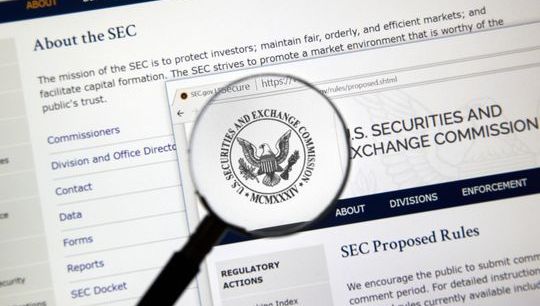An update on private debt funds in Luxembourg
By Johan Terblanche; Manfred Dietrich; Michelle Barry, Maples Group
Published: 20 March 2023
As is the case for most strategies and fund types in Luxembourg, the debt funds sector has continued to grow, with an increase of over 45% between June 2021 and June 2022. While up to date figures are not available, the expectation is that this impressive positive growth has continued into 2023 despite unfavourable economic conditions and geo-political challenges.
Investment target and strategy
The debt funds sector is well diversified, and the underlying sectors include the following:1
- 17% infrastructure and transportation
- 16% energy and environment
- 15.5% chemicals, IT, telecoms media and communications
- 14% healthcare and life sciences
- 13% consumer goods
- 10% food and agriculture
- 7.5% construction
- 7% real estate
The foregoing exposure is obtained primarily through direct lending strategies (64%), followed by mezzanine funds (13%) and distressed debt strategies (13%).2 The investor base comprises largely of institutional investors (84% in June 2022) followed by retail investors (7% in June 2022).3 The predominance of direct lending strategies and institutional investors will be of particular interest in respect of the elements contained in the Alternative Investment Fund Managers Directive (AIFMD) 2.0 Proposal and ELTIF 2.0 (both as defined below), respectively. Last but not least, 23% of Luxembourg debt funds already promote environmental or social characteristics and comply with Article 8 of SFDR.4
Observations as to legal and regulatory structuring
With respect to the choice of legal form and regulatory structuring, a continuing trend away from regulated fund vehicles to unregulated fund vehicles continues to be observed, which aligns with AIFMD’s focus on manager regulation rather than fund (vehicle) regulation. The two forms of limited partnership (special limited partnership or SCSp and common limited partnership or SCS) continue to be the preferred legal forms in the debt funds sector but other forms (including the corporate partnership limited by shares or SCA) are also used, typically in conjunction with special funds legislation (and then usually as a reserved alternative investment fund or RAIF).
It is interesting to observe, at European level and in light of the AIFMD 2.0 Proposal and ELTIF 2.0, that a set of specific rules will apply to funds that originate loans.
AIFMD 2.0 – Outlook for loan-originating funds
At European Union level, the proposed changes to the AIFMD and the rules as currently foreseen to be introduced for ‘loan-originating funds’ are worth noting. On 7 February 2023 the Report of the European Parliament Committee on Economic and Monetary Affairs regarding a proposal for an AIFMD update was published (the AIFMD 2.0 Proposal).5 As already observed during the period of time since the public consultation of the EU Commission was launched (22 October 2020), the AIFMD 2.0 Proposal contains relatively detailed proposals regarding rules to be applicable to ‘loan-originating funds’.
While there is understanding of the importance of loan origination funds to the real economy, European regulators believe that a set of common rules are necessary in order to address the potential micro risks and macro prudential risks that loan originating funds could pose and spread to the broader financial system.
Below we summarise some key elements of the AIFMD 2.0 Proposal in this respect.
A ‘loan-originating AIF’ for these purposes is ‘…an AIF whose principal activity is to originate loans and for which the notional value of its originated loans exceeds 60% of its net asset value. This needs to be read in light of the definition of ‘loan origination’ as the ‘…granting of loans by an AIF as the original lender’. The large scope thereof would, technically, also include shareholder loans.
AIFMs to loan-originating funds need to ensure compliance with specific risk management measures. This is not, as such, a new development. Funds using shareholder loans of up to 150% of their capital (meaning net asset value PLUS outstanding commitments) are exempt from this requirement.
Further rules foreseen for loan-originating funds in the risk management area are:
(i) limit of 20% of the fund’s capital (net asset value plus outstanding commitments) per borrower, where the borrower is either a Solvency II financial undertaking or another AIF or a UCITS;
(ii) the 20% limit ‘…ceases to apply once the fund starts to sell assets in order to redeem investors’ interests after the end of the life of the [fund]’;
(iii) it may be suspended temporarily for up to an additional 12 months ‘…where the [fund] raises additional capital or reduces its existing capital’;
(iv) prohibition of granting loans from a fund to its AIFM (incl. staff and group entities), the depositary or any of the delegates of the foregoing;
(v) proceeds from loans (minus costs) must be reserved to the fund – transparency on cost pursuant to amended Art. 23 AIFMD disclosure rules;
(vi) for secondary sales, 5% of the notional value should be retained with the fund until maturity, with an exemption for (i) loans acquired by the fund on the secondary market, (ii) a secondary sale to avoid an unintended breach of manager mandate or diversification rules, (iii) in a wind down scenario and (iv) if a sale is required further to EU sanctions;
(vii) Prohibition of ‘originate-to-distribute’, so funds are allowed to originate loans ‘…with the sole purpose of selling them’.
The foregoing should apply to both closed-end and open-end structures. For open-end structures it must, however, be added that detailed rules as to the employment of a choice of fixed liquidity management tools (new Annex V) in a ‘sound risk management system’ are required. There are also additional reporting obligations (AIFM for an AIF to AIFM home member state regulator, the latter to ESMA and in case of ‘…any potential risk to the stability and integrity of the financial system’, also to the European Systemic Risk Board).
An important subject for existing structures and stability of the market are the grandfathering rules. The AIFMD 2.0 Proposal foresees that existing open-end structures may disregard the employment of a liquidity risk management system for up to five years after the entry into force of the amending Directive. Very importantly a further clause foresees that existing funds which do not raise additional capital for five years after the ‘…entry into force of this amending Directive are deemed to comply with the above-mentioned Articles’. Market participants in Luxembourg currently understand this further clause as a grandfathering option available to all closed-end structures provided their final closing will happen before the date occurring no earlier than five years after the entry into force of the amending Directive.
ELTIF 2.06 – loan-originating ELTIF
As a quick reminder the regulation for European Long Term Investment Funds (ELTIF), contrary to the AIFMD, is a product related regulation in the EU and, as such, is applicable with direct effect in each EU member state. The ELTIF Regulation (in its previous form) did not enjoy large market acceptance. An intensive process for an update was therefore conducted and the Council of the EU adopted, on 7 March 2023, the revamped regulatory framework for ELTIFs, bringing the legislative process to a close. Luxembourg has historically played an important role in this context as is evidenced in the ESMA ELTIF register with almost 60% of existing ELTIF in the EU having been established in Luxembourg. Passport marketing of ELTIFs across EU member states allows for the marketing to (a large range of) retail investors. One important element of the changes implemented via the revised ELTIF regulation (ELTIF 2.0) is that the allowance for marketing to retail investors via the EU passport has even been made more flexible, logical and achievable.
The implementation of the changes provides additional opportunities which both managers and investors are likely to perceive favourably and which combines very positively with the fact that loan-origination is allowed under ELTIF 2.0.
In essence an ELTIF now needs to invest 55% of its capital (as in the AIFMD 2.0 Proposal this includes net asset value plus uncalled committed capital, as the case may be) in eligible investment assets. The scope of the eligible investment assets has been broadened significantly (including e.g. infrastructure and real assets). In this context it is also specified that 20% of the capital of an ELTIF may be invested in instruments issued by, or loans granted to, any single qualifying portfolio undertaking. A limit which may still be somewhat challenging is that the loans ‘…granted by the ELTIF to a qualifying portfolio undertaking may not have a maturity exceeding the life of the ELTIF’.
Given the leading role of Luxembourg as the preferred location for existing ELTIFs (and also for loan funds), the expectation is that the positive effects of the changes introduced under ELTIF 2.0 generally, but also in the debt funds sector are likely to lead to a significant increase in ELTIFs established in Luxembourg.
1 KPMG/ALFI Private debt fund survey 2022
2 KPMG/ALFI Private debt fund survey 2022
3 KPMG/ALFI Private debt fund survey 2022
4 Regulation (EU) 2019/2088 of the European Parliament and of the Council of 27 November 2019 on sustainability-related disclosures in the financial services sector
5 A9-0020/2023 ***] REPORT on the proposal for a directive of the European Parliament and of the Council amending Directives 2011/61/EU and 2009/65/EC as regards delegation arrangements, liquidity risk management, supervisory reporting, provision of depositary and custody services and loan origination by alternative investment funds (COM(2021)0721 – C9-0439/2021 – 2021/0376(COD)) Committee on Economic and Monetary Affairs
6 Text of the proposed Regulation amending Regulation (EU) 2015/760 as regards the requirements pertaining to the investment policies and operating conditions of European long-term investment funds and the scope of eligible investment assets, the portfolio composition and diversification requirements and the borrowing of cash and other fund rules (2021/0377 (COD); PE-CONS 69/22) as published by the Council of the EU
7 Register of authorised European long-term investment funds (ELTIFs) - Register of authorised European long-term investment funds (ELTIFs) (europa.eu)







